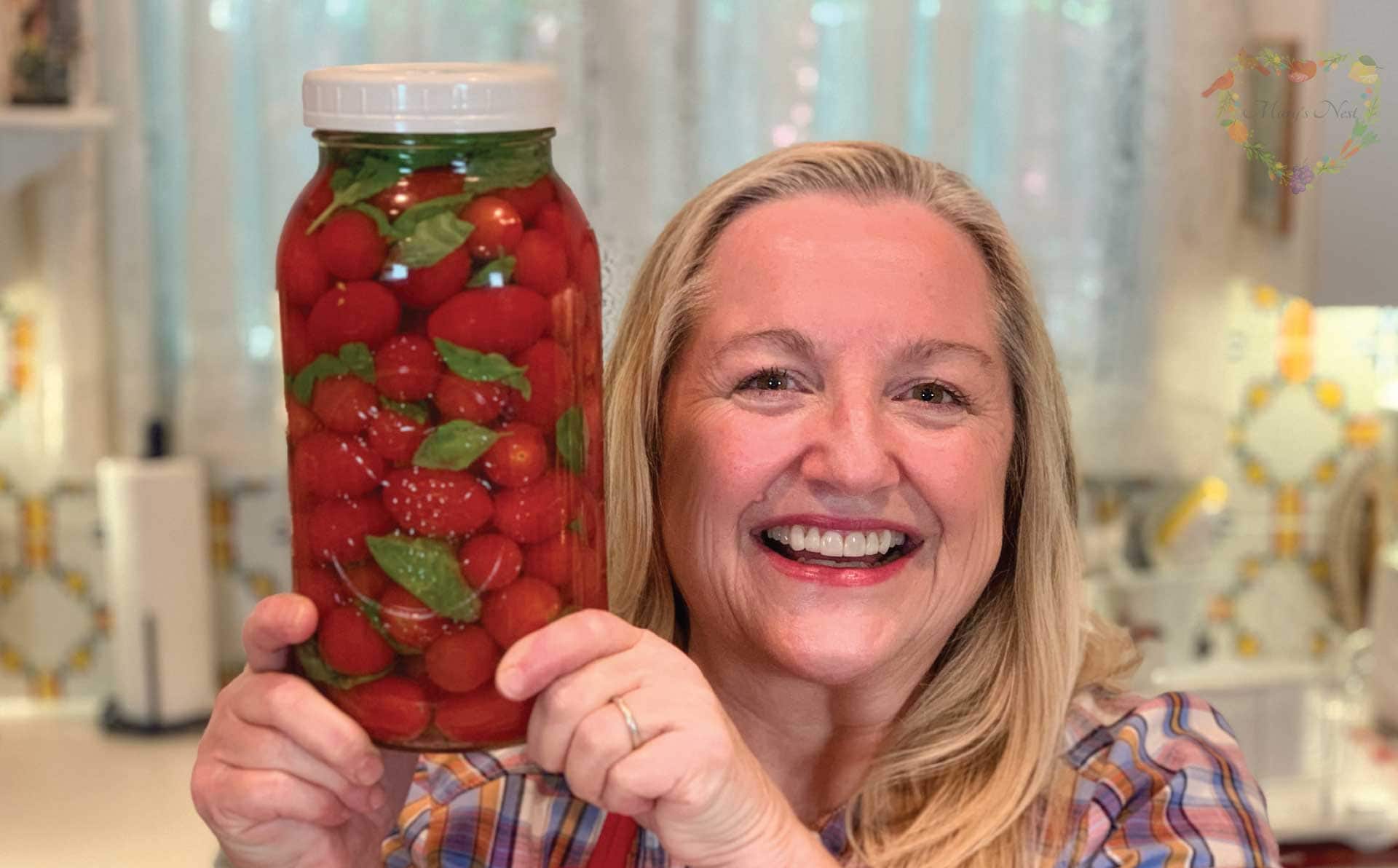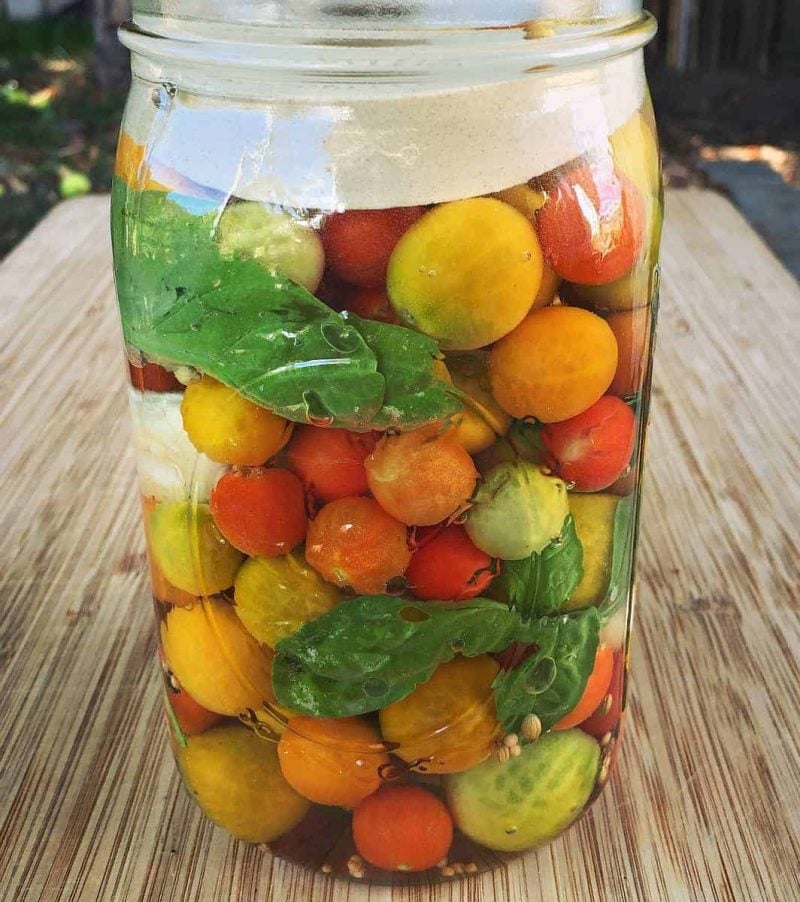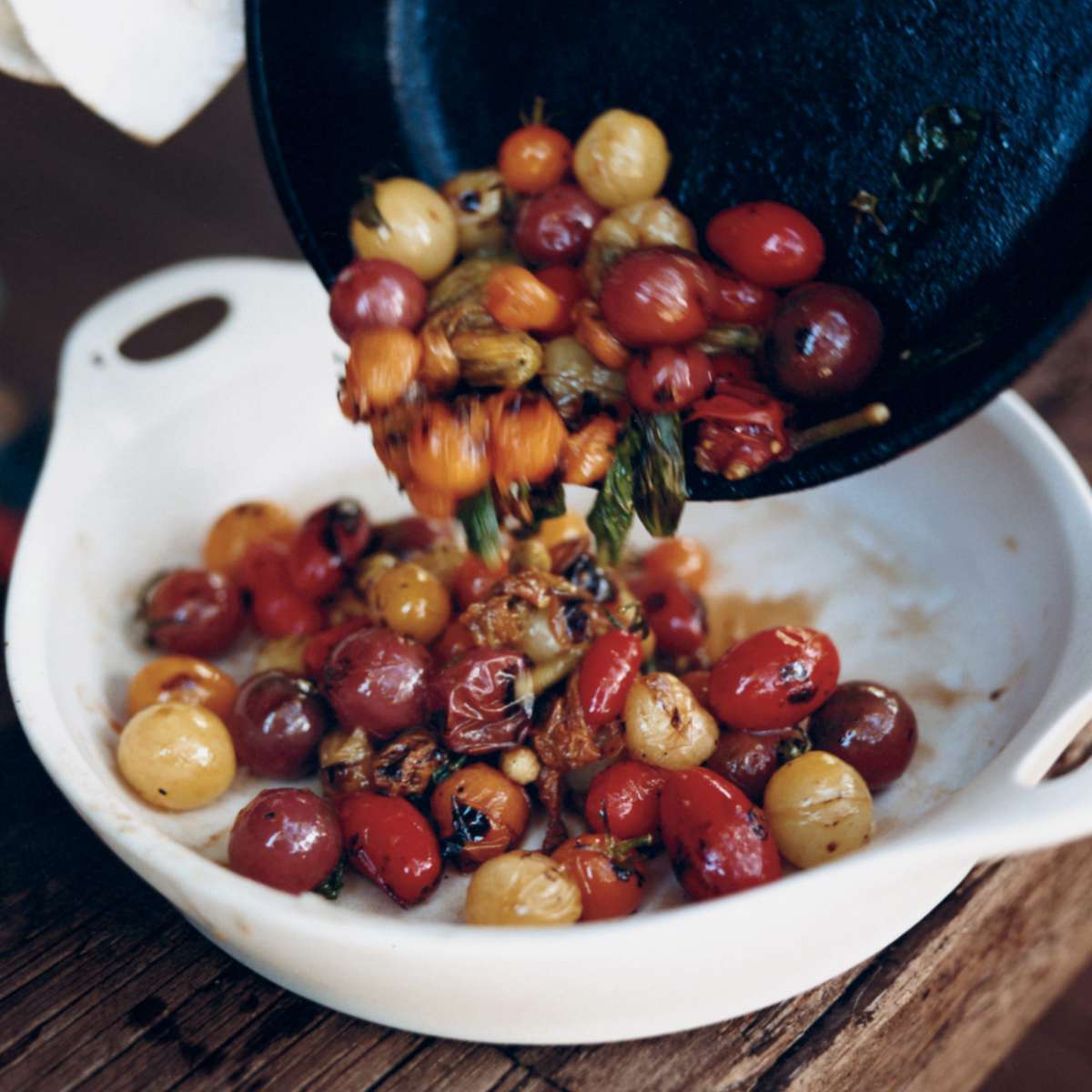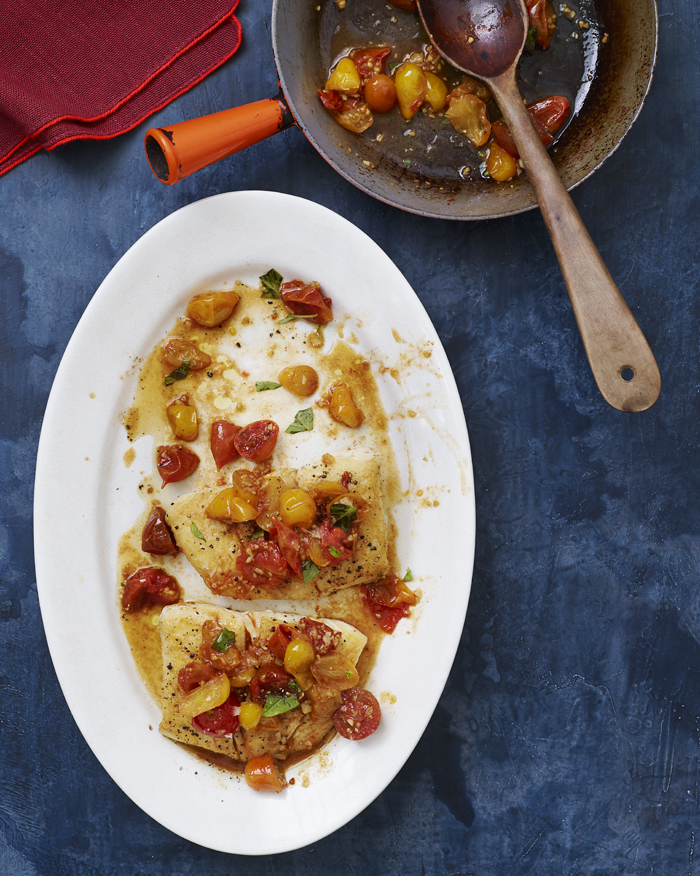Fermented Cherry Tomatoes with Basil
Your folders
Your folders
Prep Time: 10 minutes
Total: 20170 minutes
Servings: 32
Cost: $0.27 /serving
Author : Mary's Nest

Ingredients
Export 2 ingredients for grocery delivery
Instructions
Step 1
Wash tomatoes and basil.
Step 2
Remove any stems from the tomatoes, and for each tomato, use a toothpick to poke a hole in the tomato where the stem was originally. Drop the tomatoes in the jar.
Step 3
Layer tomatoes, basil, and salt in the jar. Pack the mixture as tightly as possible without rupturing the tomatoes. (See video.) If using 2 quart-sized jars, divide the ingredients evenly between the two jars.
Step 4
Continue to layer the tomatoes, basil, and salt in the jar, leaving an approximately 1-inch headspace at the top of the jar.
Step 5
Fill the jar with chlorine-free water, making sure that the tomatoes are completely submerged.
Step 6
You can place extra basil leaves and stems at the top of the jar on top of the tomatoes to help keep the tomatoes submerged under the brine.
Step 7
Put a screw-top lid on the jar and tighten. Place the jar in a bowl to catch any overflow as the tomatoes ferment. (See video.) Next, place the jar in the bowl in a warm place in your kitchen or pantry out of direct sunlight.
Step 8
Each day, loosen the lid of the jar to allow carbon dioxide to escape. The good bacteria produce this gas during the fermentation process. Once the gas is released, retighten the jar lid.
Step 9
After 2-3 days (or earlier), you will begin to see bubbles developing in the jar. At this point, refrigerate the tomatoes in the jar. The cooler temperature will slow the fermentation process, but it will continue. The lower temperature will also help to prevent the development of mold, which can be a problem with a summertime ferment, like as tomatoes, when temperatures are often warmer than ferments prefer.
Step 10
The fermented tomatoes will be ready to eat in approximately two weeks, and they will stay fresh in your refrigerator for approximately six months. Ferments generally like to be stored at approximately 40°F, so the top shelf of your refrigerator or your refrigerator door are the best storage locations. Alternative storage options include a cellar or root cellar, if those locations can properly maintain a temperature of approximately 40°F.
Top similar recipes
Curated for youYour folders

 718 views
718 viewsFermented Cherry Tomatoes
growforagecookferment.com
4.8
(5)
Your folders

 246 views
246 viewsSkillet-Charred Cherry Tomatoes wit...
foodandwine.com
5.0
(3.1k)
Your folders

 378 views
378 viewsFermented Tomatoes
homesteadingfamily.com
4.3
(25)
Your folders

 252 views
252 viewsPan Seared Tilapia With Cherry Toma...
foodandwine.com
5.0
(1)
Your folders

 203 views
203 viewsPan-Seared Halibut with Cherry Toma...
onceuponachef.com
5.0
(53)
15 minutes
Your folders

 469 views
469 viewsBarramundi with Balsamic Cherry Tom...
littlechefbigappetite.com
15 minutes
Your folders

 1680 views
1680 viewsHalloumi With Corn, Cherry Tomatoes...
cooking.nytimes.com
4.0
(119)
Your folders

 218 views
218 viewsSlow-Roasted Cherry Tomatoes With B...
cooking.nytimes.com
5.0
(255)
Your folders

 274 views
274 viewsRoasted Sicilian Eggplant & Cherry ...
ellerepublic.de
4.7
(3)
20 minutes
Your folders

 279 views
279 viewsLacto-fermented tomatoes
foodpharmacyco.com
Your folders

 357 views
357 viewsCreamy Pasta Bake with Cherry Tomat...
allrecipes.com
Your folders

 442 views
442 viewsCreamy Pasta Bake with Cherry Tomat...
allrecipes.com
4.8
(135)
31 minutes
Your folders

 745 views
745 viewsBaked Feta Pasta with Cherry Tomato...
grilledcheesesocial.com
4.3
(97)
40 minutes
Your folders

 237 views
237 viewsPesto rosso fusilli with cherry tom...
greatbritishchefs.com
Your folders

 249 views
249 viewsBluefish Chowder with Cherry Tomato...
fearlesseating.net
5.0
(2)
30 minutes
Your folders

 353 views
353 viewsHalibut with Pepitas, Capers, Cherr...
foodnetwork.com
4.5
(11)
Your folders

 375 views
375 viewsRoasted Cherry Tomatoes with Burrat...
themom100.com
5.0
(3)
30 minutes
Your folders

 181 views
181 viewsCreamy Corn Penne with Basil & Cher...
shelikesfood.com
2.5
(2)
15 minutes
Your folders

 187 views
187 viewsFermented Basil & Garlic Tomatoes |...
thecrushingcancerkitchen.com